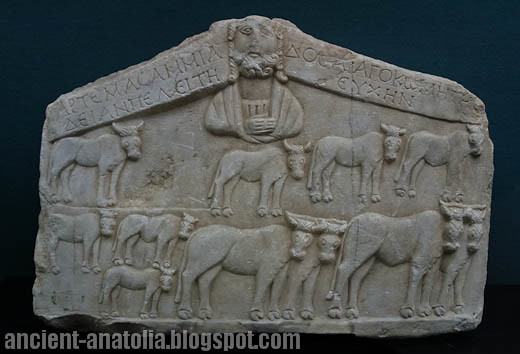
Phrygian votive Stelae at Kütahya Museum of Archaeology, from the village of Kurudere, near Afyon, Emirdag; and village of Pinarcik (Abia) in Kütahya, Altintas.
Since very early times man has made offerings to the gods either as act of thanks or of entreaty. In Phrygia during the Roman period (2nd-3rd centuries A.D.) votive deposits are made setting up stelae.

Set up by villagers the stelae record the names of local gods, assimilated to the cult of Zeus; for example, Zeus Alsenos, Zeus Patarenos, Zeus Ampelikos, Zeus Ampeleitos, Zeus Thallos. The epithets indicate the specific function of those local deities; Zeus Thallos, for example, protected young saplings, while Zeus Ampaleitos and Zeus Ampelikos safeguarded vineyards, and Zeus Alsenos looked after sacred groves. Other epithets derive from place names, as in the case of Zeus Patarenos.

The deities however also served a more general role, dealing with the villagers' various problems, especially ones concerning their health. This is shown by the presence on many of the stelae of the body (eyes, arms, legs, hands, breasts, etc.), carved in relief. Other reliefs depict objects relating to agriculture, which is also often referred to on those bearing only an inscription. Shepherds are sometimes depicted on the stelae, dressed in the typical peaked cloak made of felt. Pairs of oxen are also commonly depicted. Village woman and even slaves were portrayed on some of the stelae.
